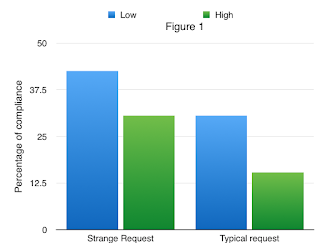Over the last couple of months, there has been a surge in stories about so-called “creepy clowns” prowling the streets. This trend has caused mild panic as schools fear about the effect on children, and even the White House has weighed in.
Terrifyingly, one such clown, with rainbow polka dots and curly blue hair even tried to abduct a small child earlier this month in Concord, CA. This lends some credence to clown-based fears, but there is more to the story than these incidents. What is it about the very nature of clown suited assailants that so deeply troubles the American public?
Humintell’s Dr. David Matsumoto explains that such a disguise “provides de-identification” for possible assailants. This means that, because their faces are obscured by makeup or fake noses, they are difficult to identify. The clown suits, in other words, create a sense of anonymity. This creates fear as anonymity can result in significant behavioral changes.
When individuals are recognizable or unmasked, they are more likely to follow social cues and expectations. As Dr. Matsumoto pointed out, “Identity is a large part of how society regulates behavior.”
This subject has been extensively studied in the field of social psychology, and researchers have found that people wearing masks tend to act more aggressively, self-evaluate less frequently, and eschew social norms of behavior.
Moreover, clown makeup obscures facial expressions, and clowns are infamous for pulling pranks. Factors such as these exacerbate the existing problem that masks and de-individualization create. In fact, clowns compete with the likes of funeral home directors and taxidermists for the “creepiest” profession.
Clowns often even actively take on an identity different than their own. A lot of clowns have their own pseudonyms, calling themselves something like “Mr. Bibbles” instead of their legal names. This feeds into the idea that they are not acting like themselves, which combined with their anonymity, results in a fear that they will act violently, or at least erratically.
But this phenomenon is not just about why we find clowns creepy. Instead, it is about why we find what seems like a movement of clowns especially creepy. Part of the reason is that de-individualization is deeply intertwined with group conformity.
In a classic study, psychologists analyzed the behavior of masked children on Halloween, in order to determine if anonymity led to them committing a minor transgression: stealing extra candy. Almost unsurprisingly, they found that the majority of masked children would help themselves to the candy bowl, especially if other children were doing the same.
Even if the children lost anonymity after being asked for their names and addresses, the majority continued to steal if the first few children did.
This speaks to the fact that large numbers of masked individuals create a homogenized and de-individualized mass with this apparent proclivity for deviant behavior. This is a lot of what inspires fear over these creepy clowns: they are anonymous, and there is a large group of them. Why are there so many? Why must they disguise themselves?
Or perhaps we have all just read too much Stephen King.
Click here to view the embedded video.
For more information on fear, read our blog on detecting fear here and the unexpectedly direct result of terror here.
 ‘I find you very attractive, will you go to bed with me?’ Elaine Hatfield carried out a revolutionary experiment in 1989, showing that 75% of men would go to bed with an averagely attractive woman if they just asked (Hatfield, 1989). Other research has confirmed the power of asking, by demonstrating that if you want something you should simply ask for it. Santos, Leve and Pratkanis (1994) suggested we have pre-set answers to questions. Therefore, an usual request is more likely to be completed as we will need to think about the answer. To demonstrate this, Santos, Leve and Pratkanis got confederates to ask a participant to borrow either a low or high amount of money, that was either strange e.g 17 cent or typical e.g a quarter. The results firstly showed that if you want to borrow money you should just ask as it is likely to get results. Secondly, people are more likely to give you money if you ask an usual request compared to a typical request as seen in Figure 1.
‘I find you very attractive, will you go to bed with me?’ Elaine Hatfield carried out a revolutionary experiment in 1989, showing that 75% of men would go to bed with an averagely attractive woman if they just asked (Hatfield, 1989). Other research has confirmed the power of asking, by demonstrating that if you want something you should simply ask for it. Santos, Leve and Pratkanis (1994) suggested we have pre-set answers to questions. Therefore, an usual request is more likely to be completed as we will need to think about the answer. To demonstrate this, Santos, Leve and Pratkanis got confederates to ask a participant to borrow either a low or high amount of money, that was either strange e.g 17 cent or typical e.g a quarter. The results firstly showed that if you want to borrow money you should just ask as it is likely to get results. Secondly, people are more likely to give you money if you ask an usual request compared to a typical request as seen in Figure 1. From the research done on the ‘just ask’ principle, I wanted to see how effective this technique would be in real life situations. I had bought a pair of jeans a couple of months ago, with the intention of giving them back to the shop. However, life got busy and I had missed the deadline for a refund. Seen as I had nothing to lose from the situation but money to gain, I decided to go into the shop and ask for a refund anyway. To my surprise, the shop assistant did not even bat an eyelid and completed the request without a seconds hesitation. Due to being astonished that I was about to get money for something I should not be, I even doubled checked that the shop assistant was aware of my lack of receipt. The request was still made. All I did was ask, and ended up getting money back in return.This is further proof of the ‘just ask’ principle. In the majority of situations, if you want something just ask! People drastically underestimate the power of asking, due to not believing it will be effective. However, as previous research such as Hatfield (1989) has shown, as well as my real life example illustrates, asking gets results!REFERNCES:Clark, R. D., & Hatfield, E. (1989). Gender differences in receptivity to sexual offers. Journal of Psychology & Human Sexuality, 2, 39-55.Santos, M. D., Leve, C., & Pratkanis, A. R. (1994). Hey buddy, can you spare seventeen cents? Mindful persuasion and the pique technique1. Journal of Applied Social Psychology, 24, 755-764.
From the research done on the ‘just ask’ principle, I wanted to see how effective this technique would be in real life situations. I had bought a pair of jeans a couple of months ago, with the intention of giving them back to the shop. However, life got busy and I had missed the deadline for a refund. Seen as I had nothing to lose from the situation but money to gain, I decided to go into the shop and ask for a refund anyway. To my surprise, the shop assistant did not even bat an eyelid and completed the request without a seconds hesitation. Due to being astonished that I was about to get money for something I should not be, I even doubled checked that the shop assistant was aware of my lack of receipt. The request was still made. All I did was ask, and ended up getting money back in return.This is further proof of the ‘just ask’ principle. In the majority of situations, if you want something just ask! People drastically underestimate the power of asking, due to not believing it will be effective. However, as previous research such as Hatfield (1989) has shown, as well as my real life example illustrates, asking gets results!REFERNCES:Clark, R. D., & Hatfield, E. (1989). Gender differences in receptivity to sexual offers. Journal of Psychology & Human Sexuality, 2, 39-55.Santos, M. D., Leve, C., & Pratkanis, A. R. (1994). Hey buddy, can you spare seventeen cents? Mindful persuasion and the pique technique1. Journal of Applied Social Psychology, 24, 755-764.